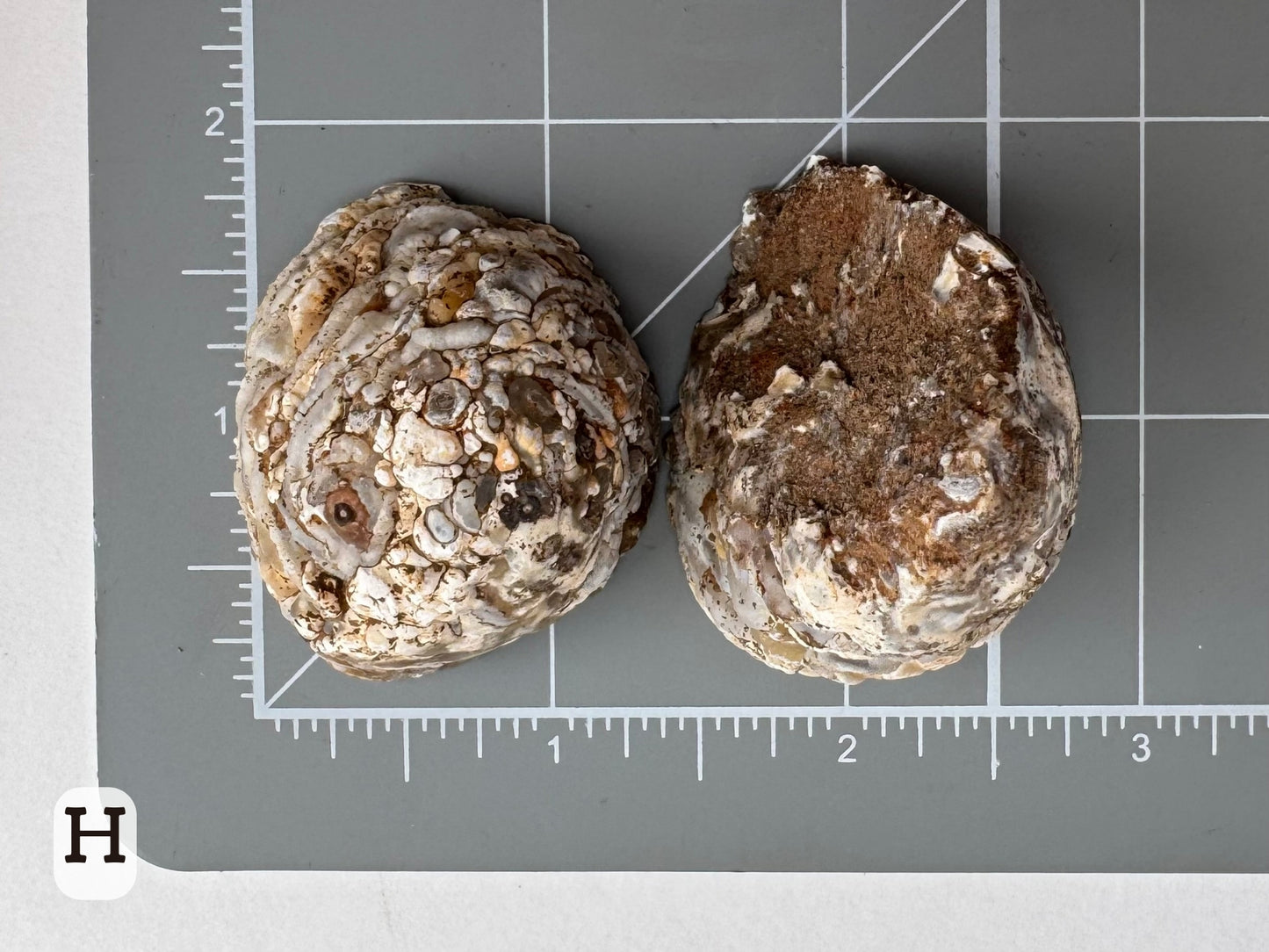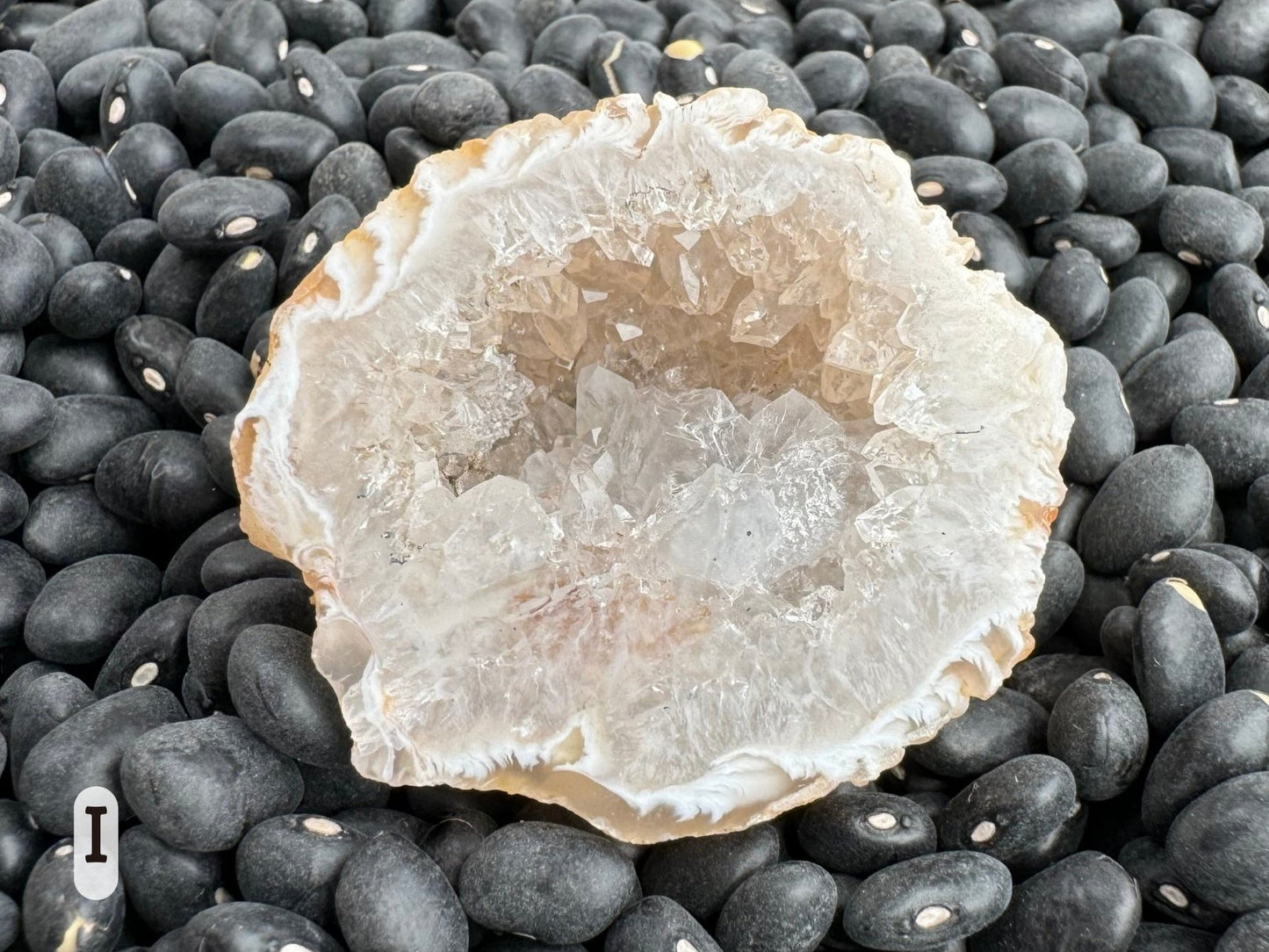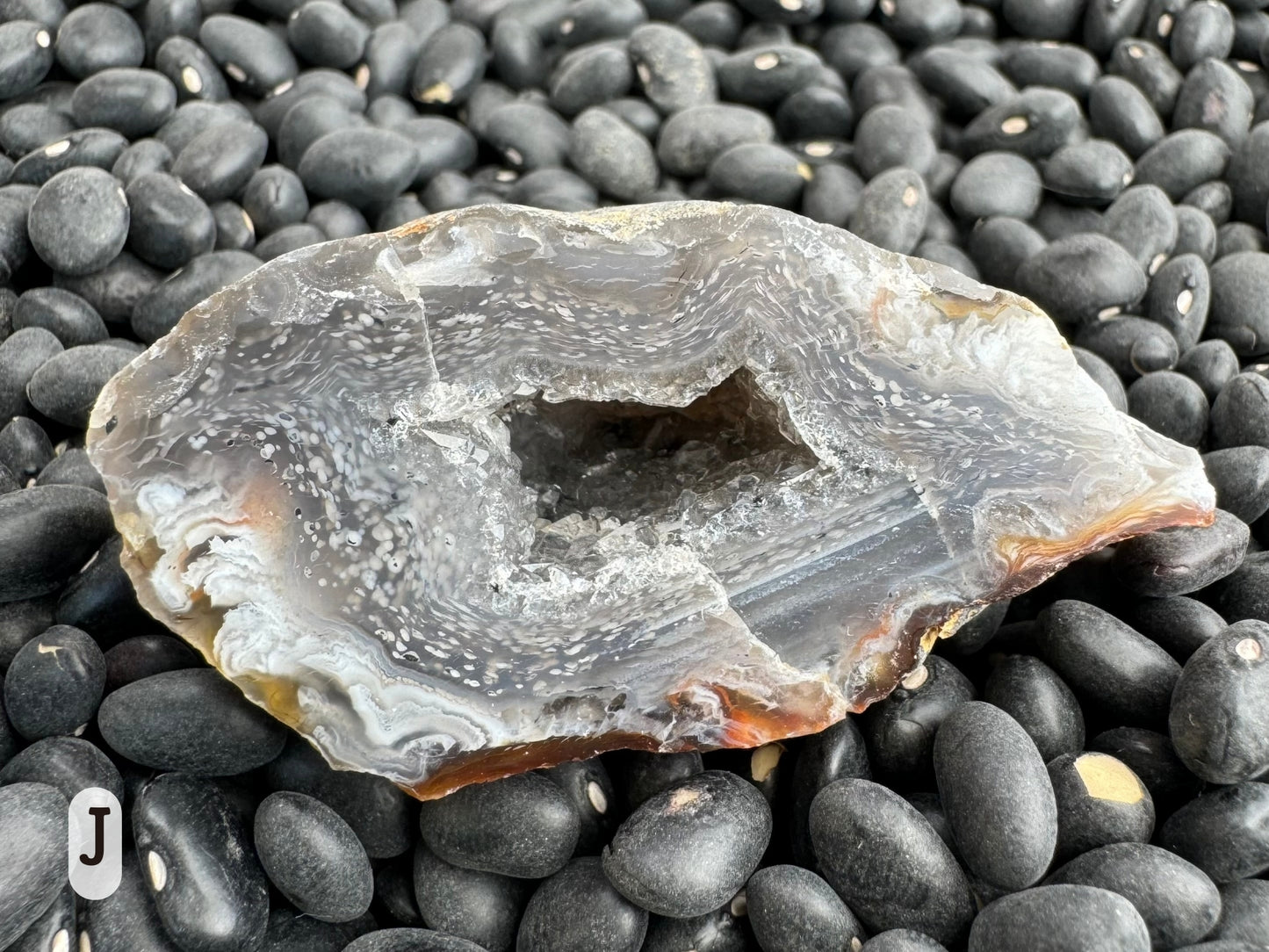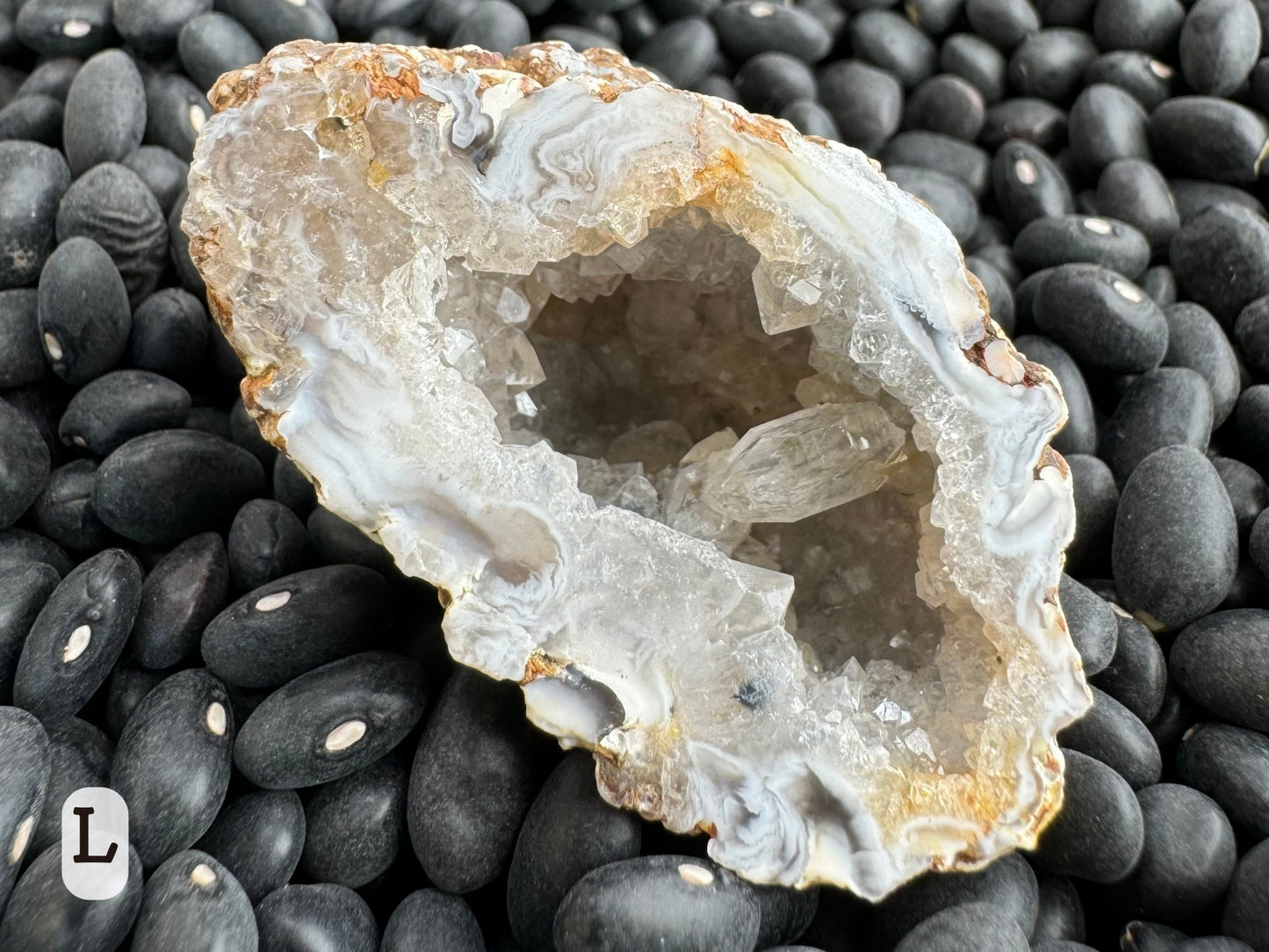Oco geode matched pairs
Oco geode matched pairs
Couldn't load pickup availability
Locale: Brazil
Approx size: length of sliced face ranges 1.5"–3.25" (1.75" avg)
Approx weight: 70–120g (100g avg)
Oco geodes traditionally originate from the Três Pinheiros region of Brazil. They form when gas bubbles are trapped in molten volcanic rock. In the silicate-rich environment, quartz and chalcedony (a cryptocrystalline form of quartz) grow over time to line or even fill the cavity. The geodes often have agate (color-banded chalcedony) caused by variations in the color-causing trace elements available in the environment as the crystals grew. On the outside, the geodes typically display a ropy swirled or circular pattern, though they can look like a simple rock.
Each geode is a world unto itself, a product of the unique circumstances of its formation. Ocos have a large color palette: primarily warm tones of brown, red, orange, yellow, white, black, and grays. The swirls on the outside can extend into the geode in the form of a feathery swirl pattern visible around the edge of many specimens, which people refer to as ‘feather agate.’ The geode is lined with a quartz druzy but can contain additional complex crystal formations, including different varieties of quartz. Many Ocos are translucent enough that shining a light through the back can illuminate the interior.
UV reactivity Oco geodes aren’t known for their reaction, but some may fluoresce white or a radioactive shade of green. This is visible in the chalcedony base; interior quartz crystals typically do not fluoresce.














































































